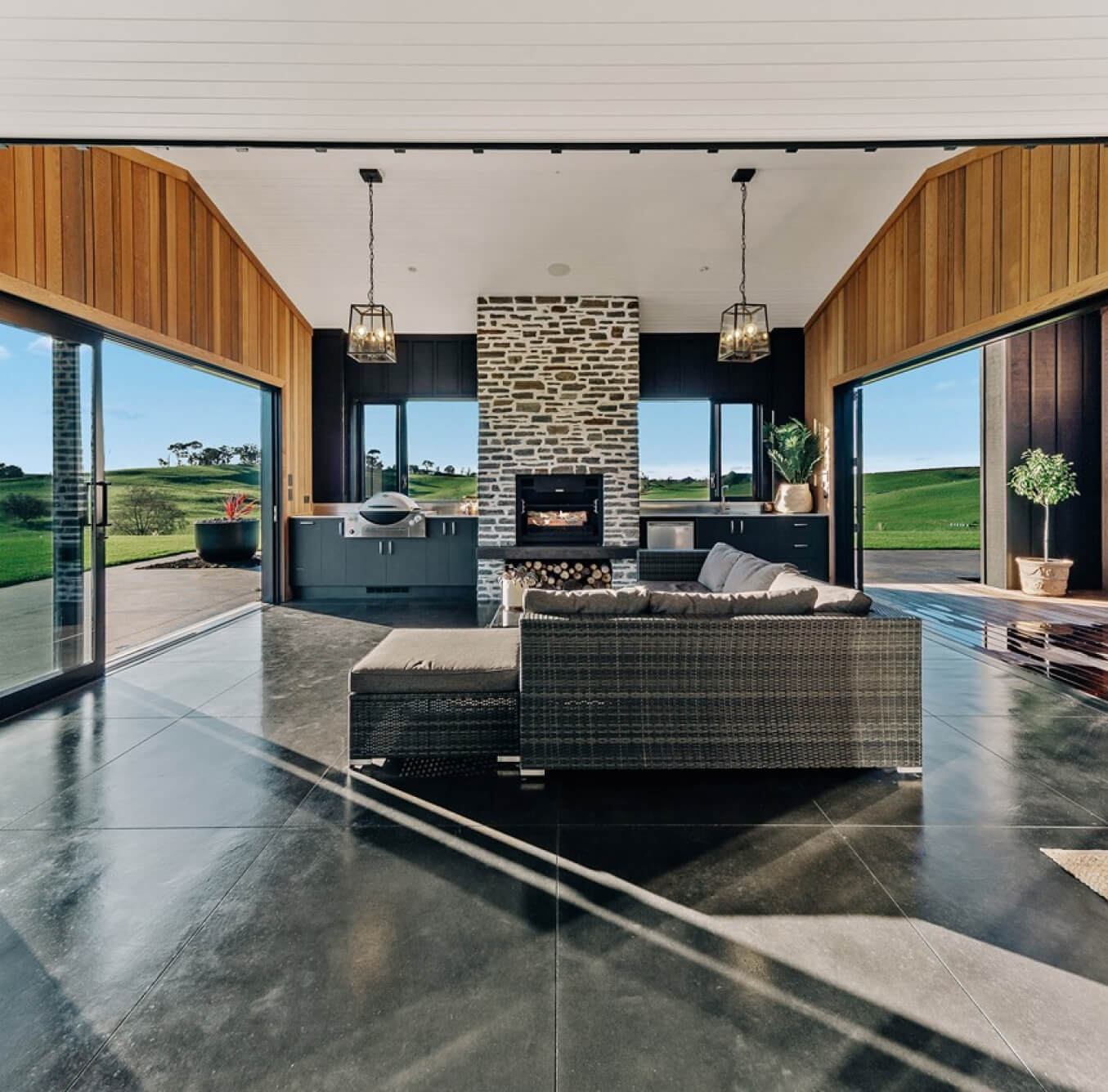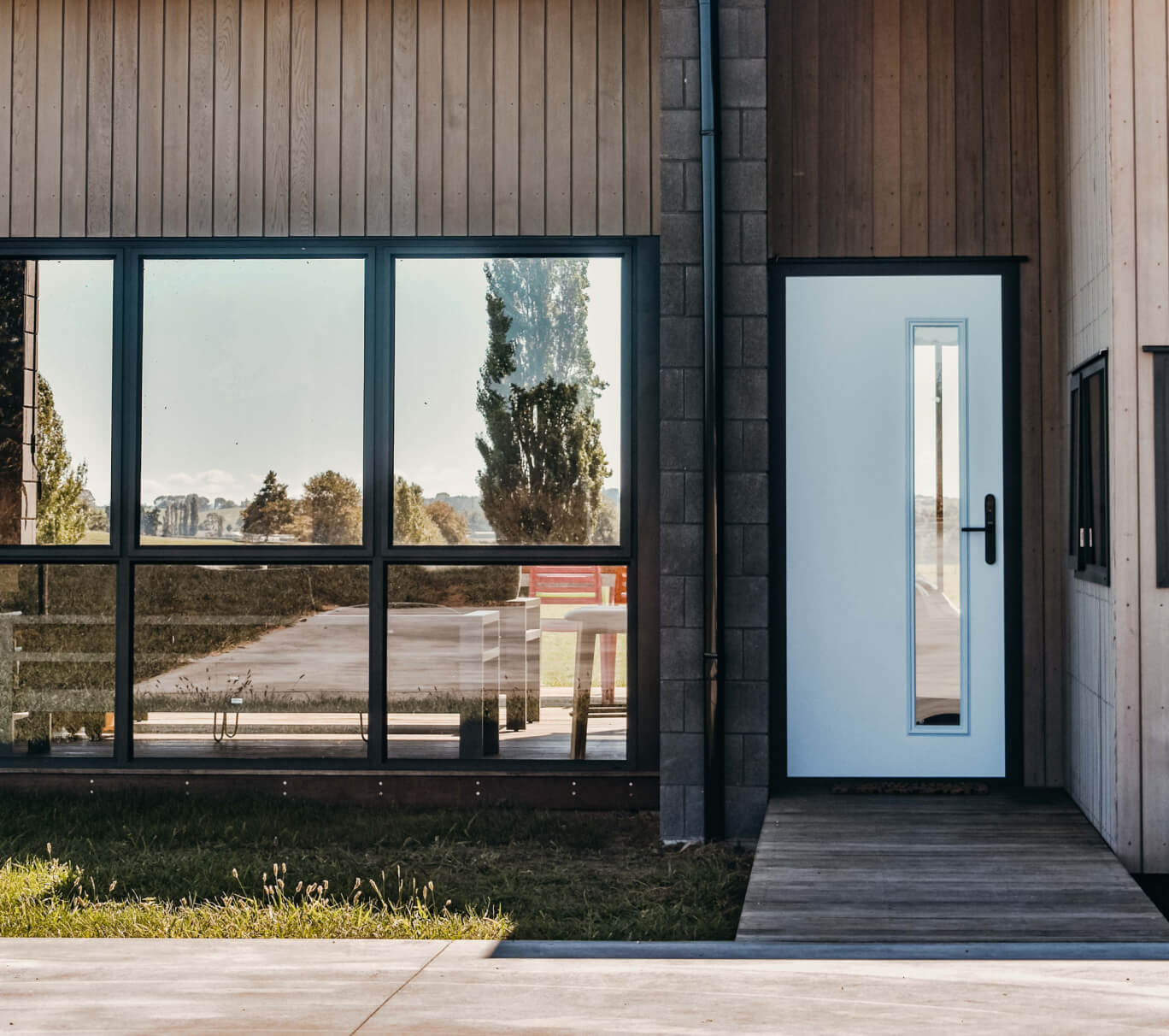Selecting the right windows is crucial for any New Zealand home. Windows affect natural light, ventilation, energy efficiency, and overall aesthetics. Two popular options are bi-fold and sliding windows, each with distinct advantages and considerations.
Pros and Cons of Sliding Windows:
Sliding windows operate with panels that move horizontally along tracks. They typically consist of two or more glass panes that slide behind one another. Sliding windows are best for smaller spaces, maximising views, and those seeking a simple, modern aesthetic.
Pros:
- Space-saving: No swing space is needed, making them ideal for smaller rooms or tight spaces.
- Uninterrupted Views: Large glass panes provide expansive, unobstructed views when closed.
- Simple Operation: Lightweight aluminum frames allow for smooth and easy gliding.
- Minimal Sightlines: Slim frames maximise glass area and offer a sleek, modern look.
Cons:
- Partial Opening: The opening is always partially obstructed, as one panel slides behind another.
- Track Maintenance: The track system may require occasional cleaning to ensure smooth operation.
- Limited Airflow: While providing ventilation, they don't offer the full opening of bifold windows.

Pros and Cons of Bifold Windows:
Bifold windows have multiple panels that fold against each other in a concertina style. They run on tracks and are connected by hinges. Bifold windows are best for creating a seamless indoor-outdoor connection, maximising ventilation, and adding a premium feel to a space.
Pros:
- Full Opening: The panels can be completely folded away, creating a wide, open connection between the inside and the outside.
- Seamless Indoor-Outdoor Flow: Ideal for open-plan living and connecting to outdoor areas.
- Highly Customisable: Available in various sises, panel configurations, and finishes.
- Flexible Opening Styles: Can be designed to open inwards or outwards.
Cons:
- Stacking Space: Panels require space to fold when open, inside or outside.
- More Visible Framing: Multiple panels can lead to thicker sightlines than sliding windows.
- Potentially Higher Cost: It is a more premium option with a higher initial investment.

Key Comparison Points:
- Space Efficiency: Sliding windows excel in tight spaces. Bifold windows need stacking room.
- View: Sliding windows offer a clear view when closed. Bifold windows offer a completely open view when fully open.
- Ventilation: Bifold windows provide superior ventilation when fully open. Sliding windows offer partial ventilation.
- Cost: Sliding windows are generally more budget-friendly. Bifold windows are a premium option.
- Aesthetics: Sliding windows have a sleek, modern look. Bifold windows offer a dramatic, open feel.
Specific Considerations for Kiwis:
- New Zealand's varying weather conditions mean both window types must be robust. Consider double glazing for thermal efficiency and strength against wind and rain.
- Local building codes may have specific requirements for window installations, so check with Duco Group before committing to a specific type of window.
In summary, both sliding and bifold windows offer unique benefits. Sliding windows are practical and visually appealing, especially for maximising views in smaller spaces. Bifold windows excel at creating a seamless connection between indoor and outdoor areas.. Your choice will depend on your needs, space, budget, and aesthetic preferences.
Are you looking for quality sliding or bifold windows in Waikato, New Zealand? We supply and install premium options for every home and budget. Contact us today for a free consultation.


